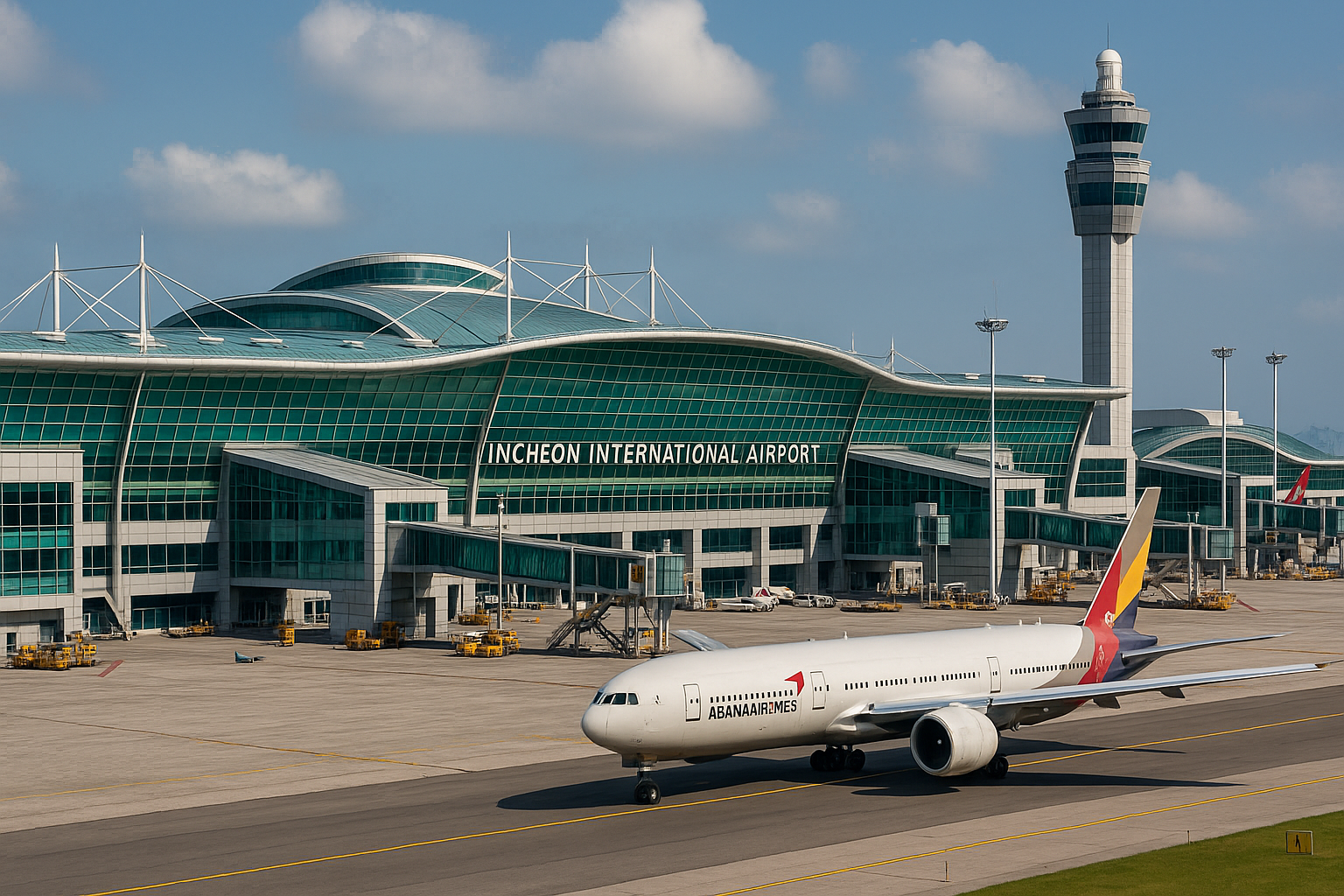Launch of a Global Carbon Standard at COP28 Certifying Airports for Achieving Net Zero Carbon Balance
The 28th Conference of the Parties (COP28) marked a historic moment in the fight against climate change with the launch of a global carbon standard aimed at certifying airports for achieving a net-zero carbon balance.

Launch of a Global Carbon Standard at COP28 Certifying Airports for Achieving Net Zero Carbon Balance
Key Takeaways:
- A new global carbon standard was launched at COP28 on December 6, 2023, to certify airports that have achieved a net-zero carbon balance.
- This initiative is a significant step towards reducing the aviation industry's carbon footprint and aligning with international climate goals.
- The certification process involves rigorous assessment and verification, encouraging airports worldwide to adopt sustainable practices.
The 28th Conference of the Parties (COP28) marked a historic moment in the fight against climate change with the launch of a global carbon standard aimed at certifying airports for achieving a net-zero carbon balance. This groundbreaking initiative represents a concerted effort to address the environmental impact of one of the most carbon-intensive sectors: aviation.
Understanding the New Global Carbon Standard
On December 6, 2023, the international community witnessed the unveiling of a comprehensive framework designed to measure, manage, and mitigate the carbon emissions of airports around the world. This global carbon standard is not just a set of guidelines but a robust certification system that recognizes airports' efforts to reach net-zero emissions. It is a response to the urgent need for the aviation industry to contribute to the global reduction of greenhouse gases and align with the Paris Agreement's objectives.
The standard encompasses a wide range of criteria, including energy efficiency, renewable energy adoption, carbon offsetting, and stakeholder engagement. Airports seeking certification must demonstrate a clear and verifiable path to achieving a balance between the carbon they emit and the emissions they offset or eliminate. This process is intended to be transparent and based on scientific evidence, ensuring that the certifications awarded are both credible and meaningful.
Advertising
The Role of Airports in Combating Climate Change
Airports are pivotal in the aviation industry's overall carbon footprint, not only through the flights that take off and land but also through the ground operations that support them. From the energy consumed by terminal buildings to the vehicles that operate on the tarmac, every aspect of airport operations contributes to carbon emissions. The new global carbon standard aims to transform these operations by setting ambitious yet achievable targets for airports to become carbon neutral.
By adhering to this standard, airports can lead by example, showcasing how large-scale infrastructure can operate sustainably. The certification process encourages airports to innovate, invest in green technology, and engage with airlines, passengers, and local communities to foster a culture of sustainability. This collaborative approach is essential for creating a ripple effect that can influence the entire aviation sector.
The Certification Process: Rigor and Integrity
The certification process under the new global carbon standard is designed to be rigorous and comprehensive. Airports must undergo a detailed assessment that evaluates their current carbon footprint, followed by the implementation of strategies to reduce and offset their emissions. This includes a thorough review of energy sources, waste management practices, and transportation policies.
Third-party verification plays a crucial role in maintaining the integrity of the certification. Independent auditors assess the airports' claims and evidence, ensuring that the net-zero balance is not only claimed but also achieved in practice. This level of scrutiny is crucial for the credibility of the certification and for building trust among stakeholders and the public.

Advertising
Global Participation and Impact
The launch of the global carbon standard at COP28 has garnered widespread support from airports across different continents. This global participation underscores the universal recognition of the need for concerted action against climate change. Airports in Europe, Asia, North America, and other regions have already begun the process of aligning their operations with the new standard, signaling a commitment to environmental stewardship.
The impact of this initiative is expected to be far-reaching. As more airports achieve certification, the standard will likely become a benchmark for sustainability in the aviation industry. It will not only reduce the sector's carbon emissions but also inspire other industries to adopt similar measures. The global carbon standard is poised to be a catalyst for change, driving innovation and cooperation in the pursuit of a more sustainable future.
Incentives and Support for Airports
To encourage airports to pursue certification, a range of incentives and support mechanisms have been put in place. Financial incentives, such as grants and subsidies, are available to help airports invest in the necessary technologies and infrastructure to reduce their carbon footprint. Additionally, technical support is provided to guide airports through the certification process, including access to best practices and expert advice.
The support extends beyond financial and technical assistance. Airports that achieve certification are recognized internationally, enhancing their reputation and providing a competitive advantage. This recognition serves as a powerful marketing tool, attracting environmentally conscious airlines and passengers. The incentives and support are designed to make the certification process accessible and appealing, ensuring that the global carbon standard leads to widespread adoption and meaningful environmental progress.

The Future of Sustainable Aviation
The introduction of the global carbon standard at COP28 is a significant milestone in the journey towards sustainable aviation. It sets a clear direction for the industry and provides a framework for airports to contribute to the global climate effort. As the standard gains traction, it is expected to drive further innovation in the sector, leading to the development of new technologies and practices that can reduce aviation's environmental impact even more.
The future of sustainable aviation is not just about reducing emissions but also about reimagining how airports and airlines operate. It involves a holistic approach that considers the entire lifecycle of aviation activities, from the construction of airport infrastructure to the disposal of aircraft at the end of their service life. The global carbon standard is a step towards this future, laying the groundwork for a more sustainable and responsible aviation industry.
Summary
The launch of the global carbon standard at COP28 on December 6, 2023, marks a pivotal moment in the aviation industry's efforts to combat climate change. This initiative provides a clear and actionable framework for airports to achieve a net-zero carbon balance, with a rigorous certification process that ensures credibility and transparency. The widespread adoption of this standard is expected to have a significant impact on reducing the aviation sector's carbon footprint and inspiring other industries to follow suit. With robust support mechanisms in place, the future of sustainable aviation looks promising, as the industry takes a leading role in the global transition to a low-carbon economy.
Advertising



